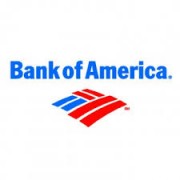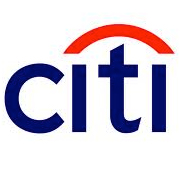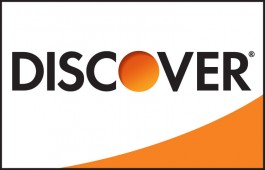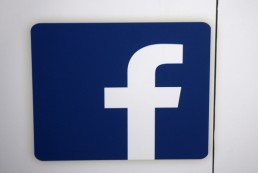The Nuts And Bolts Of Earnings Season
We don’t know about you, but we think that the payments earnings season, so far, has given us all a ringside seat into the future of our business and how some of the biggest players in the space see their role in it.
Let’s see.
JPMorgan Chase said it’s under attack and proclaimed it won’t be breaking up; Wells Fargo has a better outlook on the year than it did last. Bank of America opened its Apple Pay kimono, and Citibank gave us a peek into its mobile plans. American Express hit the trillion-dollar volume mark, but also announced 4,000 layoffs. EBay talked about spinning off its Enterprise business and inked a deal with Carl Icahn that has some people speculating about what it really means. Discover took a stab at Visa and touted its rewards. Starbucks took center stage and reminded us that they are the lead dog in terms of physical store mobile payments, for now.
Tim Cook declared 2015 the year of Apple Pay, and Apple sold another huge bunch of iPhones. Facebook hinted at its deeper into commerce and payments plans. Visa is looking way beyond Apple Pay and full steam ahead to expand tokenization to browser-based e-commerce. Alibaba got whacked by the Chinese regulators at the same time they announced that 86 percent of GMV in China flows through them. And, Google is still plugging and chugging at a commerce and payments plan by making it easier for retailers to link intent to sales on their platform. And, drumroll please, perhaps the biggest news of all — Amazon shocked analysts and turned a profit. And to cap off last week, MasterCard put up a better-than-expected profit due to higher consumer spending, and its CEO talked security highlights of Apple Pay and MasterPass.
Here are the highlights (and some of the lowlights).
 JPMC Is Better Together, Says Dimon (Jan. 14)
JPMC Is Better Together, Says Dimon (Jan. 14)
Unless the “government makes them do it,” JPMorgan Chase won’t be broken apart. JMPC CEO Jamie Dimon and CFO Marianne Lake spent a majority of the company’s earnings call talking about the “breakup” questions posed by analysts. They were both adamant that the company stands stronger as one unit — particularly for its shareholders. Dimon also had some strong words for regulators.
“Banks are under assault. We have five or six regulators coming at us on every issue,” Dimon said during Wednesday’s analyst call. “Obviously companies make mistakes. We try to resolve it, we try to fix it; we admit it.”
In terms of relevant earnings figures, JPMC had a mixed quarter as it missed earnings expectations, posting a 6.6-percent drop in quarterly profit after it shelled out more than $1 billion in penalties and legal expense for the bank’s actions in the foreign exchange markets.
JPMC’s active online customers hit 36.4 million (includes active mobile customers of 19.1 million). This figure is up 3.5 million or 22 percent; average deposits were up 8 percent; credit card sales volume was up 10 percent; Chase cardholders accounted for over $600 billion, or approximately 16 percent of total U.S. credit and debit purchase volume; credit card sales volume hit $123.6 billion, up 10 percent from the prior year; general-purpose credit card sales volume growth has outperformed the industry for 27 consecutive quarters; merchant processing volume hit $230.2 billion, which was up 13 percent from the prior year and up 8 percent from the prior quarter. Total transactions processed hit 10.3 billion, which was up 7 percent from the prior year.
 Wells Fargo Q4 Earnings On Point (Jan. 14)
Wells Fargo Q4 Earnings On Point (Jan. 14)
Diversification. That sums up what Wells Fargo CEO John Stumpf had to say about its performance strategy for the bank in Q4, saying that “as the U.S. economy continues to build momentum, I’m optimistic that our diversified business model will continue to benefit all of our stakeholders in 2015.”
Overall, Wells Fargo posted a net income of $23.1 billion in 2014, up 5 percent, year over year. The bank posted revenue of $21.4 billion, which was above Wall Street’s prediction of $21.23 billion — or a 4-percent increase from last year’s fourth quarter.
In terms of online and mobile banking, Wells Fargo reported it has hit 24.8 million active online customers, up 8 percent year over year. The company now has 14.1 million active mobile customers, up 19 percent year over year. Credit card penetration in retail banking households rose to 41.5 percent, up from 37 percent percent the year prior.
Looking ahead, Stumpf provided a positive outlook for the year ahead, but recognized that the company may be in store for challenges, just as analysts also suspect.
“We are not saying we are off to the races, but we are a bit more optimistic in 2015 than we were at this time in 2014,” Stumpf said.
 Bank of America, Citi Betting On Mobile Transactions (Jan. 15)
Bank of America, Citi Betting On Mobile Transactions (Jan. 15) 
Although Apple hasn’t released specific figures on how many consumers actually use its mobile wallet, Bank of America shared some stats on how many of its cards are in Apple Pay wallets.
“Since the introduction of Apple Pay in October (of 2014), nearly 800,000 [Bank of America] customers have enrolled in the service, adding approximately 1.1 million cards,” the company said Jan. 15.
Speaking of cards, Bank of America has roughly 50 million credit cards in circulation and is said to have added 1.2 million new credit cards in the bank’s fourth quarter. Bank of America’s number of new credit cards in the fourth quarter of 2014 was a 19-percent increase from the 1 million cards issued in the same quarter a year prior. They say that roughly 67 percent of those cards went to existing relationship customers. Bank of America made a clear statement by announcing its mobile transaction numbers that it’s continuing to push Apple Pay to its customers.
While there wasn’t much mention about mobile payments figures during Citibank’s earnings call with analysts Jan. 15, nor in its financial release, it was reported that Citi is buying IBM’s new mainframe to help boost its mobile and online transaction capabilities – and, hopefully, volume.
“[Mobile] is causing us to see a different blend of transaction mix and volume, and it’s causing us to look at how we deliver that elegant, seamless experience to the customer in a very scalable and secure way,” said Martin Kennedy, managing director for global enterprise platforms and storage at Citi.
 EBay Enterprise Spinoff, The Icahn Pact And PayPal’s Future (Jan. 21)
EBay Enterprise Spinoff, The Icahn Pact And PayPal’s Future (Jan. 21)
As eBay moves beyond what CEO John Donahoe called “a very difficult year” for the company, the e-commerce giant announced it is “exploring strategic options for eBay Enterprise, including a sale or IPO.”
“Enterprise is a strong business and a leading partner for large retailers, managing mission critical components of their e-commerce initiatives. However, it has become clear that it has limited synergies with either business and a separation will allow both to focus exclusively on their core markets, as we create two independent world class companies,” the company said in its release.
In news unrelated to earnings, but particularly relevant for the eBay/PayPal split, eBay announced that it has entered into a “standstill agreement” with investor Carl Icahn, the company’s largest active shareholder. This agreement requires particular governance provisions to be adopted by PayPal once it is an independent company.
“This agreement reflects our alignment on separation and our agreements on the benefits of avoiding distraction,” Donahoe said.
Mobile payment and mobile commerce were highlighted as positives for eBay’s fourth quarter results, but mobile also presents challenges for a company like eBay.
“Mobile has become a greater percentage of our mix, which skews more toward emerging markets and a younger demographic who tend to buy lower-priced items,” Donahoe said. He also discussed mobile innovation on both eBay and PayPal. “For both businesses, mobile continues to be a major source of innovation. … Mobile GMV was up 42 percent for the year. Mobile GMV at eBay was $28 billion.”
 Amex Passes Trillion-Dollar Volume Mark (Jan. 21)
Amex Passes Trillion-Dollar Volume Mark (Jan. 21)
While American Express posted relatively solid fourth-quarter earnings — beating analysts’ expectations — the positives for the company were overshadowed by the announcement that it would cut 4,000 jobs this year.
CEO Ken Chenault offered few details other than to hint that restructuring may allow American Express to create jobs elsewhere within the company, which could partially offset some of the layoffs. The cuts, which amount to $313 million in expenses per quarter, represents 6 percent of its total workforce of 62,800 employees.
“Our business and industry continue to become transformed by technology which is increasingly becoming more powerful and less expensive. Technology is also changing the way our card members and merchants want to interact with us and has created new channels of communication that has created card member satisfaction,” Chenault said on the call.
One expense that appeared not to be in check were marketing and rewards expenses. Expenses, in particular, designed to promote and encourage card usage with several of its major partners including Delta, Uber, Apple (in support of Apple Pay) and McDonald’s were up sharply.
Overall, revenue was up 7 percent for Amex, to $9.1 billion, which was attributed to a $719 million sale of the company’s investment in Concur Technologies.
 Discover Improves Rewards, Takes Aim At Visa — At A Cost (Jan. 21)
Discover Improves Rewards, Takes Aim At Visa — At A Cost (Jan. 21)
Even though Discover’s payments volume rose and its loan portfolio grew by 6.4 percent, the card issuer’s net income plummeted 33 percent for the last three months of 2014. The biggest contributor to the plunge: a change to Discover’s rewards program that makes it easier for cardholders to redeem points for cash.
“Customers have told us that, in some ways, not losing their rewards was even more important than the headline rate,” CEO David Nelms said. “And it was a way for us to meet the competition, have advantages in ways that were greater value to consumers at lower cost to us, and therefore is beneficial to us long term.”
Fourth-quarter revenue, net of interest expense, declined 4 percent to $2.04 billion from $2.13 billion a year earlier. Analysts had expected $2.2 billion, about the same as the prior quarter. The $178 million charge for the rewards-program changes was not a surprise. Discover said in a November regulatory filing that it was removing thresholds for allowing customers to redeem points, and would no longer strip cardholders of rewards if they’re delinquent in paying or their account is closed or inactive. CEO David Nelms said during the third-quarter earnings call that the changes would raise the cost of rewards to about 1.17 percent, up from just under 1 percent of sales volume.
While payments volume overall was up 2 percent to $51 billion, that too was a mixed bag. Pulse EFT network volume increased 4 percent from the prior year, but network partners volume declined 13 percent because of the previously announced loss of a third-party issuer. That, in turn, was partially offset by the $1.5 billion in AribaPay transactions that the Discover Network carried.
 Starbucks’ Mobile Payments Jolt (Jan. 22)
Starbucks’ Mobile Payments Jolt (Jan. 22)
Starbucks CEO Howard Schultz emphasized once again the launch of Starbucks’ mobile order and pay app in December would be the single-most important technology innovation introduced in 2014 and will continue to be in 2015.
Schultz and team were sure to keep one important detail close to the vest: how specifically mobile order and pay is doing in its Portland, Oregon test market. Financially speaking, of course. The executive team didn’t hesitate to emphasize the success of the program’s rollout with specific numbers.
In terms of Starbucks’ mobile payment volume, the company announced it was nearing the average of 7 million mobile transactions a week, and it looks like that number brewed over the threshold as Schultz said the company has surpassed that mark and said that mobile transactions now make a larger portion of sales than ever.
“We continue to see broad customer acceptance and adoption of our mobile payment technologies,” he said. “Today in the U.S. alone, over 13 million customers were actively using our mobile apps. And we are now averaging more than 7 million mobile transactions in our stores each week — representing 16 percent of total tender. That’s more than any other bricks-and-mortar retailer in the marketplace.”
 Tim Cook: 2015 The Year Of Apple Pay (Jan. 27)
Tim Cook: 2015 The Year Of Apple Pay (Jan. 27)
“2015 will be the year of Apple Pay,” said AppleCEO Tim Cook, who wasn’t shy when speaking about the progress of the mobile payments app and how the service will evolve in attracting new merchants, issuers, and consumers in the year to come. Cook gave analysts a peek into Apple Pay’s success, and in true Apple fashion he alluded to the product’s growth without providing any overly specific payment volume figures. But he did gave some insight into some key figures about what sort of mark Apple Pay is making on payments.
“As of today, about 750 banks and credit unions have signed on to bring on their customers, and in just three months after launch, Apple Pay makes up two out of three dollars spent on purchases using contactless payments across the three major U.S. card networks,” Cook said. “In merchants who already accept Apple Pay, the rates are even higher. Panera Bread tells us Apple Pay represents nearly 80 percent of their mobile payment transactions. And since the launch of Apple Pay, Whole Foods Markets has seen the use of Apple Pay increase by more than 400 percent.”
Oh, and Apple sold a ton of iPhones — again.
If the number of iPhones Apple sold in its first quarter equaled the population of a city, the figure would be roughly eight-times larger than New York City. Hint: that’s 74.5 million — the number of iPhones Apple sold in Q1. But because Apple doesn’t release its precise inventory figures, it’s impossible for those outside of Apple’s ranks to know how many of those were iPhone 6 or iPhone 6 Plus. The surge of iPhones sold in Q1 also helped Apple hit another milestone: the sale of its billionth device. That helped Apple hit its all-time record revenue of $74.6 billion, a 30-percent increase from the year prior. The iPhone sales boost helped overall profit hit$18 billion for the quarter.
And Apple also announced its successful growth in China, which is going to be a major market for Apple, the iPhone and potentially Apple Pay in 2015. While Cook didn’t point to China specifically for Apple Pay, its growing share of iPhone users show Apple may work to get into the heavily regulated payments market in China.
 Sandberg Hints At Facebook’s Payments Intentions (Jan. 28)
Sandberg Hints At Facebook’s Payments Intentions (Jan. 28)
Facebook still hasn’t laid out a clear plan for its payments plan. But COO Sheryl Sandberg, who spoke directly about Facebook’s ability to ignite the e-commerce market through its mobile strategies, gave some strong hints.
“Q4 is a particularly important quarter and it’s particularly important for e-commerce,” said Sandberg. “When you think about Buy on Facebook it’s a small test in the U.S. that we started last quarter and it enabled people to buy on pages. To be clear — you’re not buying from Facebook, you’re buying directly from the merchants. And it’s really an SMB product to give them capability they haven’t had. We’ll see what happens in terms of where people convert — whether it’s on Facebook. But we think the opportunity to connect consumers with the product that they then purchase is a really big one. Where we play in that most directly is the time and attention consumers have as well as information to very relevant advertising, and we’re going to see a focus there.”
With a nod toward organic growth between customers and business and how Facebook can open up e-commerce channels for the social platform’s business users, Zuckerberg spoke about how What’s App and Facebook Messenger can be used over time to help Facebook create its commerce and payments strategy.
“What you see with What’s App and Messenger now is we’re still at the early end of that curve where the interaction is still primarily people to people, and businesses are starting to figure out in the case of What’s App much less than Messenger so far what the organic interaction is. But we’re going to have to go through a whole cycle of how that works before it really makes sense to monetizing them in a big way. I am a big fundamental believer that these are going to be big contributors to our businesses over time, but we just have to do it right.”
In its Q4, Facebook ad revenue rose 53 percent to $3.85 billion, year over year, with payments and other fee revenues up just 7 percent to $257 million. Mobile monthly active users grew slowly for the quarter at a 6 percent growth rate, but was up 26 percent, year over year, to 1.18 billion users. Daily active users grew 64 percent, year over year.
 Visa Pushes Tokens For Apple Pay — And Beyond (Jan. 29)
Visa Pushes Tokens For Apple Pay — And Beyond (Jan. 29)
Visa is already looking beyond Apple Pay. Visa, which beat analysts’ expectations, said it isn’t planning layoffs and will do a 4-for-1 stock split in March. But Visa is also pushing the tokenization that lies at the core of Apple Pay onto browser-based e-commerce this spring, and onto non-Apple phones later in 2015.
“We’re very excited about what Apple is doing. We think it’s a very elegant solution that we are thrilled with our participation in,” said Visa CEO Charlie Scharf. “But we want to enable as many scalable solutions that have wonderful customer interfaces that adhere to the highest security standards. And we would expect to see a series of those in the next couple of quarters come to market.”
Scharf said Visa is in “very, very active dialogue” with handset manufacturers and other players about getting token-based mobile payments onto other platforms, though he didn’t name any partners. Samsung is reportedly working with Visa on its own Apple Pay-like mobile payments.
For browser-based e-commerce, Scharf was less cagey: “In the spring of this year we will have some tokenized solutions in the marketplace for some browser enabled solutions,” he said.
In its traditional payments business, the numbers were good, too. Payments volume grew 11 percent to $1.2 trillion for the quarter, while cross-border payment volume growth was 8 percent. Total transactions processed by VisaNet were 17.6 billion, a 10-percent increase from the prior year.
 Alibaba Commanding Mobile Commerce Lead (Jan. 29)
Alibaba Commanding Mobile Commerce Lead (Jan. 29)
Alibaba had the misfortune of having Wall Street and regulators at odds with them over the last couple of months. But on the bright side, its mobile commerce story proved to be tremendously impressive.
“For this quarter we achieved 265 million monthly active users on our mobile commerce apps, which is a net increase of 48 million active users compared to 217 monthly active users in the prior quarter. This is a sequential growth of 22 percent and a year-on-year growth of 95 percent,”Alibaba Executive Vice Chairman Joseph Tsai said. “Alibaba leads the China mobile commerce market with 86 percent share of total mobile GMV, according to iResearch. And our Mobile Taobao App continues to be the No. 1 mobile commerce app, and in fact, one of the most popular mobile apps in all China. This strength in mobile commerce demonstrates our ability to attract mobile users with strong commercial intent on a scale that we believe is unrivaled by any of our peers in China globally.”
Reporting on a quarter that missed analysts’ revenue estimates, Tsai managed to fend off criticism that included government accusations of counterfeit scandals and bribery while still providing an optimistic look into the company’s progress. The Chinese e-commerce giant said it got blindsided by accusations from the State Administration for Industry and Commerce (S.A.I.C.) that Alibaba failed to stop the sale of fake goods, accepted bribery from merchants to gain higher rankings and sold counterfeit goods across its marketplaces. But Alibaba fought back.
“Our commitment to ethical and transparent behavior is why we are so deeply troubled by an SAIC report released on Jan. 23 that reported the published results of a product sample check in online commerce. As we said before, we believe this report was flawed, and was based on arbitrary methodology and we gave our views to the S.A.I.C.,” Tsai said.
The case continues as Alibaba Chairman Jack Ma met with regulators on Friday (Jan. 30).
 Google Payments And Commerce Vision (Jan. 29)
Google Payments And Commerce Vision (Jan. 29)
Google is still making billions in its desktop ads business, but earnings for Q4 missed analysts’ projections. Revenue (minus traffic acquisition costs) was $14.48 billion, compared to the $14.61 billion that was projected. Gross revenue was $18.1 billion, also missing its $18.45 billion forecast. The majority of revenue derived from ads, at $16.2 billion for the quarter, was up about $2 billion from 2013. But Google’s future in the mobile world remains an open question, as advertising on mobile devices doesn’t deliver the revenue that advertising on the desktop does.
But since the future of advertising (and so many other things) is mobile, Google’s hope for mobile’s potential remains high.
“Mobile is now a behavior, not a device, and it has a variety of unique characteristics,” Google Chief Business Officer Omid Kordestani noted on the earnings call, before running through the various ways Google is leveraging mobile to deliver a product more tailored to mobile’s strengths.
While Google had a fair amount to say on its mobile commerce ambitions, it had very little to share about its mobile payments plans. Neither Kordestani or Patrick Pichette had anything specific to say about Google Wallet in their prepared remarks. When asked about it by an analyst, Kordestani was cheerful, if vague.
“Really our focus [is to] turn consumers’ shopping intents into actions simply and easily…On payments the goal is to remove all the friction that one encounters in the shopping experience and what we’re really working on here is a move beyond tap and pay to having a full and functional payments system. Today you can move money to friends through Gmail using the Wallet app and we just made the functionality available in the U.K. Loyalty and gift cards can be stored on the Wallet app, the Buy With Google option makes it possible for users to buy with two clicks. So, really we’re focused on building a rich offering here to make it easy to shop and pay and remove the friction.”
 Prime Turns Amazon Profitable Again (Jan. 29)
Prime Turns Amazon Profitable Again (Jan. 29)
Yes, you read that correctly. Amazon posted a profit. And shares of Amazon stock surged nearly 12 percent in after hours trading. Cue a big sigh of relief for its shareholders, and CEO Jeff Bezos — at least for now.
A surge in holiday sales and Prime memberships helped Amazon post a profit — making Amazon the biggest shock of the week on the Street. The much needed profit gift for investors came as Amazon reported profits of $214 million, with overall operating income at $591 million (up $81 million from Q4 in 2013). That’s a stark contrast to Q3’s operating loss of $544 million on $20.58 billion in sales. Q4 had sales up 15 percent, year over year to $29.33 billion. A big part of Amazon’s profit story is Bezos’ bet on Amazon Prime.
“When we raised the price of Prime membership last year [2014], we were confident that customers would continue to find it the best bargain in the history of shopping. The data is in and customers agree — on a base of tens of millions, worldwide paid membership grew 53 percent last year — 50 percent in the U.S. and even a bit faster outside the U.S.,” said Bezos. Amazon does not break out sales figures from Prime, but did speak about how it helped overall sales increase. “Prime is a one-of-a-kind, all-you-can-eat, physical-digital hybrid — in 2014 alone we paid billions of dollars for Prime shipping and invested $1.3 billion in Prime Instant Video.”
CFOR Thomas Szkutak also hinted on how Amazon has adapted to consumer shift in e-commerce shopping behaviors that has them seeking platforms that enable convenience and speed instead of simply looking at price as a way to attract customers.
“In terms of speed of delivery and convenience, we see that with Prime members. Prime members are buying more. It’s more convenient. They are getting their physical product to them faster versus being not a Prime member. So we certainly see that. So that’s certainly speed of delivery helps. We need to make sure and it’s something that we are always focused on is making sure we have great prices and that’s every single item across categories, across geographies. So it’s something we are focused on,” he said.
 MasterCard CEO Touts Security Features of Apple Pay, MasterPass (Jan. 30)
MasterCard CEO Touts Security Features of Apple Pay, MasterPass (Jan. 30)
Higher consumer spending helped MasterCard post a strong fourth quarter earnings Friday (Jan. 30), posting a better-than-anticipated profit increase of 29 percent to $801 million, year over year. Quarterly results also included a 14 percent revenue increase to $2.4 billion.
But perhaps the most interesting talking points to come out of last week’s earnings call — at least from a payments industry perspective — was CEO Ajay Banga’s comments about tokenization, Apple Pay and MasterPass. Apple Pay came up more than once during the earnings call as Banga touched on the security perks of it, and suggested that its own MasterPass would keep up with the necessary security measures seen in Apple Pay.
“But we are very focused on — you know, tokenization. … It’s a very important aspect of where we’re going for safety and security. Apple Pay was the first version of that to come out. We’re putting it into MasterPass, just regular MasterPass over the next few — period of time, let me put it that way, so I don’t give you information that’s beyond what is likely, and that will be — you’ll see in a year or two’s time, tokenization will become kind of fiddlesticks in the game on e-commerce,” Banga said.
NFC and EMV and Chip migration also were key points during MasterCard’s earnings call with analysts last week.
“My sense is you’re going to get NFC growing decently, particularly with terminalization, and I believe terminalization will happen with all the EMV and chip migration as well as the fact our new terminals are coming contactless-equipped, so you’re probably seeing a two or three-year cycle of a fairly dramatic increase in contactless-equipped terminals in the United States.”
